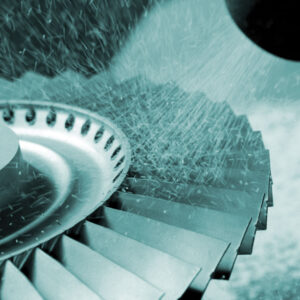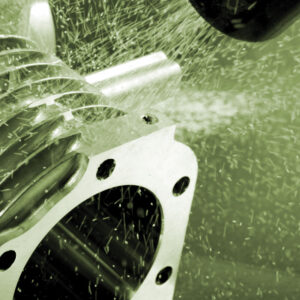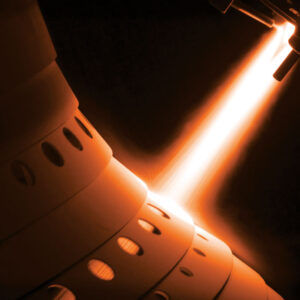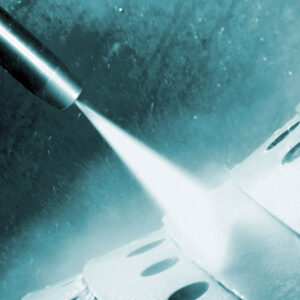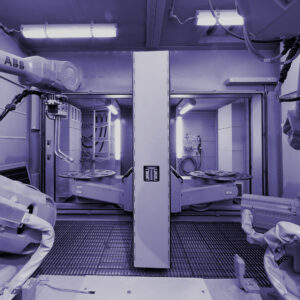What is Waterjet Cleaning?
Home / What is Waterjet Cleaning?
What is Waterjet Cleaning?
Waterjet stripping or cleaning, or water blast cleaning, is a widely used process for the removal of material, coating, or contamination from the surface of a work piece. Ultra high-pressure waterjet stripping uses water that is pressurized between 30,000 to 60,000 psi (207–414 MPa) to remove coatings and debris from substrates.
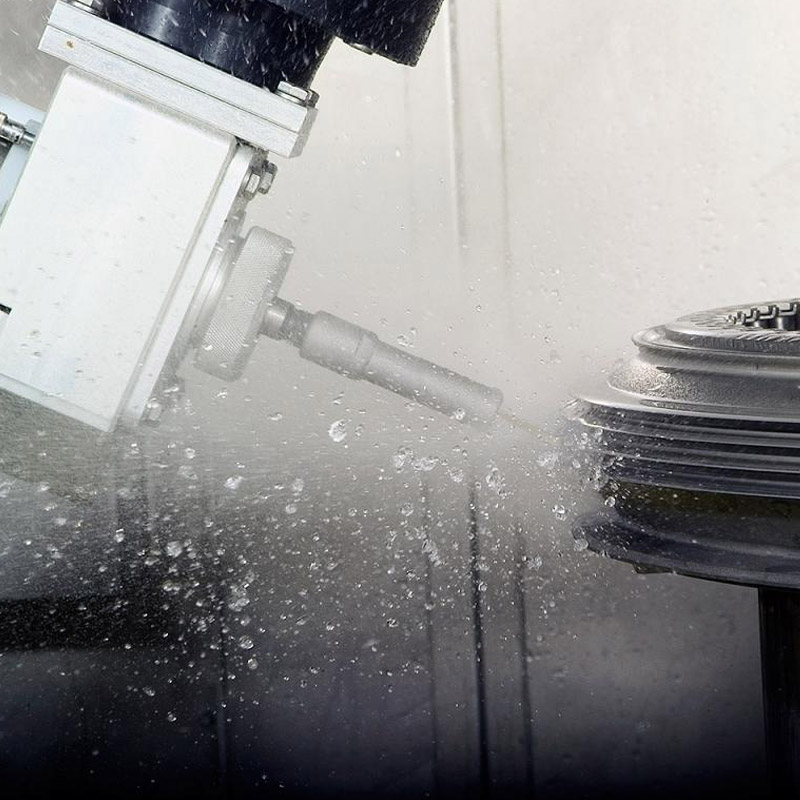
How Waterjet Cleaning Removes Coatings
The waterjet stripping process removes coatings with one of two different mechanisms: erosion or delamination. Erosion is used on the majority of hard coatings such as metal and carbide thermal spray coatings. A special nozzle is used to break up the water stream into small droplets, which impact the surface of the coating. This causes small pieces of the coating to erode off the surface, leaving the substrate intact.
The other mechanism of removal is delamination, which is used on softer coatings such as paint, adhesives, ceramic and abradable thermal sprayed coatings. With these softer coatings a nozzle keeps the waterjet stream intact, allowing it to penetrate the coating and impact the substrate, spreading out to delaminate the coating at the bond interface. Much faster stripping rates are achieved with this type of coating removal as compared to the hard coatings that require erosion removal. It is crucial that the mode of removal is understood so that the correct waterjet cleaning nozzle and process parameters are selected.
Waterjet Stripping Subsystems
Most waterjet systems consist of the following subsystems:
- pump to pressurize the water
- nozzle to deliver the correct stream of water to the workpiece
- enclosure to contain process
- nozzle and part manipulators
- waste handling equipment
- process control devices
These components may be arranged in many different configurations to fit the needs of each application and customer.
Benefits of Waterjet Cleaning
The waterjet cleaning process offers many benefits over competing conventional processes used to remove coatings. Traditionally the coatings removed with ultra high pressure water were removed either by the use of chemicals or other conventional mechanical means such as abrasive blasting or machining. Chemical removal is expensive, slow, and environmentally unfriendly. Abrasive blasting or machining is more cost effective and faster than chemical processing, but cannot differentiate between the coating and the substrate, which usually results in removal of excessive material, thereby possibly scrapping or limiting the life of these parts. Water jet stripping is fast, environmentally friendly, and can only remove the coating with minimal to no substrate removal, making it the best alternative for coating removal for critical applications such as removal of thermal sprayed coating from industrial gas turbine components.
Water jet cleaning systems are used to remove many coatings from a wide range of parts in the aerospace, automotive, and heavy equipment industries including:
- adhesives
- epoxies
- felt metal
- grease
- paints
- resin composites
- rubber
- thermal spray coatings (including ceramics, metallics, abradables, and cermets)

